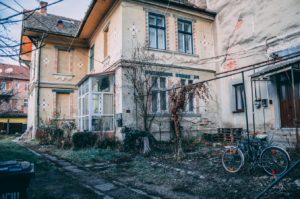 Erie County, New York, foreclosures were 33% during the first three months of 2019 compared to 2018, according to Erie County Clerk Michael Kearns, and to combat the rise of zombie properties in the area brought by the increased foreclosures, the Erie County clerk’s office and New York State created the Zombie Foreclosure Task Force. Erie County is also working to start a new Neighborhood Foreclosure A.L.E.R.T. Program where municipalities can check a database to monitor foreclosures in their community, WKNY Buffalo [1] reports.
Erie County, New York, foreclosures were 33% during the first three months of 2019 compared to 2018, according to Erie County Clerk Michael Kearns, and to combat the rise of zombie properties in the area brought by the increased foreclosures, the Erie County clerk’s office and New York State created the Zombie Foreclosure Task Force. Erie County is also working to start a new Neighborhood Foreclosure A.L.E.R.T. Program where municipalities can check a database to monitor foreclosures in their community, WKNY Buffalo [1] reports.
"With the WNY Law Center, we are going to partner with those municipalities and actually sue those banks that don't comply," Kearns told WKNY.
"It can be a challenging task of determining who is responsible for upkeep on foreclosed homes," Kearns said.
Kearns notes that excessive rain this spring is raising concerns of "zombie properties" becoming overgrown with grass and weeds.
In recent years, New York has struggled [2] with lingering foreclosure issues and urban blight related to abandoned properties. Foreclosures across New York have dropped by 46% since 2013, and the number of pending foreclosure cases in the state is down by half since 2014. However, New York State Comptroller Thomas P. DiNapoli warned earlier this year that “the foreclosure crisis is far from over,” adding, “New York must continue to support the programs and reforms that have helped homeowners avoid foreclosure and communities reduce blight caused by zombie properties.”
In a white paper published by the National Mortgage Servicing Association (NMSA), the NMSA discussed some “common sense, practical, and affordable remedies,” aimed at reducing the costs of foreclosure practices and community blight.
According to the white paper, titled “Understanding the True Costs of Abandoned Properties: How Maintenance Can Make a Difference,” [3] the typical foreclosed home can impose costs of around $170,000, $85,000 of which is attributable to vacant property requirements and condition.
“It’s time to rethink how we deal with vacant and abandoned properties,” the white paper states.